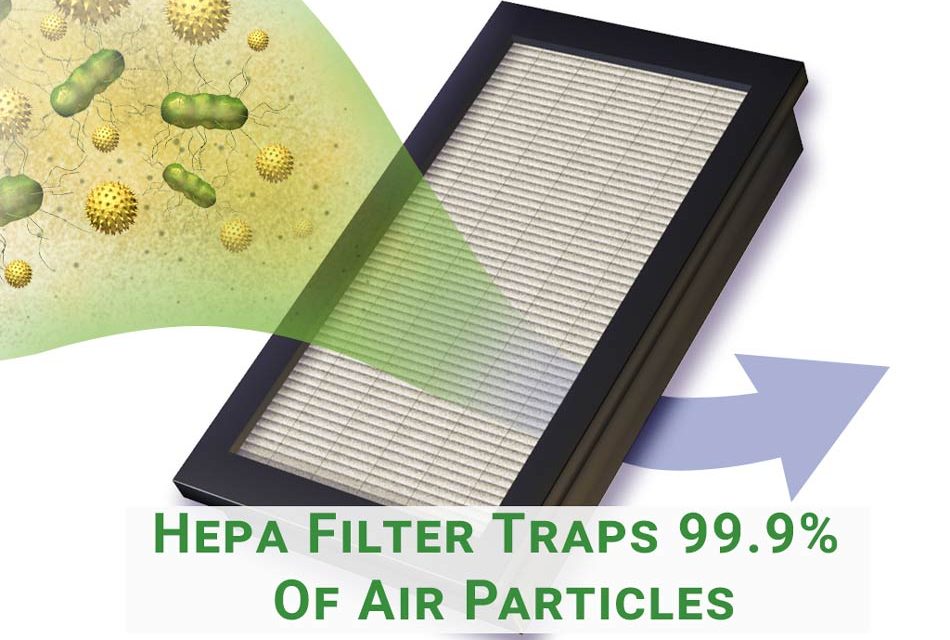What the HEPA is a HEPA Filter!?
In my search for an effective and safe air purifier, I have heard mention of these so-called HEPA filters. I thought to myself, “What the ‘HEPA’ is a HEPA filter!?”
This question drew me to my regular process of internet searches and educational rabbit holes. Here is what I found:
HEPA is actually an acronym and stands for High-Efficiency Particulate Absorbing Filter, or High-Efficiency Particulate Arrestance Filter, hence H.E.P.A.It is not a brand name of filter, which was I initially thought, but it is actually a level of standard given to a filter.
“Your product must be this effective at catching airborne particulate to be considered HEPA.”
But how effective does a filter need to be to be blessed with a HEPA-level of standard, what does it mean when it absorbs particulate, and what is it made out of to make it ‘highly-efficient? These are the questions that still remained, and my new targets for furthering my decent into the next layer of my internet search.

How efficient is Highly-Efficient?
Since HEPA is a level of standard rather than a brand name like Kleenex or Clorox, HEPA filters must follow strict guidelines to bare the HEPA seal.
Firstly, and arguably most importantly, a HEPA filter must be at least 99.9% effective at catching airborne particles that are as small as 0.3 microns. That is EXTREMELY small. To put that into perspective, the average human hair is 100 microns in diameter, human eyes can normally see as small as 35 microns! 0.3 microns is unbelievably tiny, but it needs to be if it has any chance of catching the equally tiny dust, pollen, bacteria and viruses floating through the air.
Where does the particulate go!? And what is a particulate?
Think of a HEPA filter kind like a kind of microscopic fishing net for little floaty things in the air. Incredibly fine fibers made of polypropylene or fiberglass are scattered, stretched, pressed and formed into long sheets. The sheets are then folded accordion-style and framed into the necessary shape used for the required application or appliance. The space between the fibers is where the air in the room flows through. As the air flows through the fibers, the particles in air collide and are caught on the fibers, allowing clean, virus-free air to return into the room. Because the spaces in a HEPA filter are so small, only 0.3 microns, the filters are able to catch airborne particulates like dust, dirt, pollen, bacteria, and viruses (2.0 – 0.125 microns). Some airborne particulates are smaller than the spaces in a HEPA-rated filter, so how can it really be effective at catching these types of bacteria and viruses?
What makes a good HEPA Filter, good?
HEPA filters are great at catching extraordinarily small airborne particulates for multiple reasons. The first reason being that the spaces between the fibers that make up the filter are very small. At 0.3 microns wide, the small spaces catch the relatively much-larger dust, dirt and pollen particles quite easily. But how about the much-smaller bacteria and viruses? To catch these types of particulates, HEPA filters use a number of different mechanisms to make sure they are caught effectively and not returned back into the room air.
The mechanisms are: Diffusion, Interception, Inertial Impaction, and Electrostatic Attraction.
Diffusion
Diffusion is how HEPA filters catch those extremely tiny particulates, bacteria and viruses that are less than 0.3 microns. Especially effective at lower airflow speeds, diffusion happens when the bacteria or virus getting pushed through the filter bounces and impacts with other gas molecules, increasing the likelihood that it will be pushed onto one of the many fibers in the filter, and ultimately getting stopped and trapped in their tracks.
Interception
Interception happens when particulates flowing through the filter comes in contact with a fiber and gets caught instantly. This is what happens to the mid-sized particulates, the ones that may be able to slip through some of the spaces between the fibers, but not all.
Inertial Impaction
Impaction is for the heftier particulates in the air, the dust and pollen and other debris. This is when the particulates are unable to fit through the tiny spaces between the fibers in the filter, and are stopped early, unable to be passed through and be recirculated out in the air.
Electrostatic Attraction
Electrostatic Attraction happens when a particulate with an negative ionic charge is caught by the positively charged fibers in the filter. For example, think of the fibers in the filter like the static charge on a birthday balloon. With a positive charge on a balloon, you can “pick up” dust from the floor using electrostatic attraction.
From what I’ve found in my research trying to find the answer to “What is a HEPA filter?”, I have discovered many interesting things about how HEPA filters work. It seems like one of the best, low-maintenance ways catch most of the harmful things floating in the air that I would not want my family, friends or myself breathing in everyday or any day. It is so effective that it can catch VIRUSES out of thin air! It is so effective that HEPA filters are currently being used in hospitals, airplanes, and now some modern cars. This is a technology I can trust. Finally, a breathe of fresh air.


